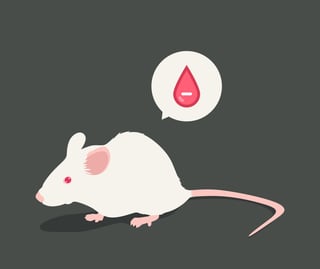Share this
preclinical research: how microsampling cuts costs
by Neoteryx Microsampling on Nov 15, 2017 6:26:00 AM
 Animal studies are expensive and time-consuming, and sometimes raise ethical questions. In the past, researchers have often used more animal blood and lives than was necessary. Now there is pressure to reduce the number of animals used in any study, for both ethical and financial reasons.
Animal studies are expensive and time-consuming, and sometimes raise ethical questions. In the past, researchers have often used more animal blood and lives than was necessary. Now there is pressure to reduce the number of animals used in any study, for both ethical and financial reasons.
Research into new medications and treatments for disease requires both preclinical and clinical studies. Preclinical experiments are done both in vivo and in vitro. In vivo means the experiment is done within an animal, such as a mouse. In vitro experimentation is done on Petri dishes or in test tubes. The test tubes come first, but the next step is animal studies if the in vitro observations are promising.
Extracting blood from mice used to require a lot of skill and access to a good vein. In recent years, researchers have been using just one drop of blood, picked up with a capillary tube, about 20 microliters. The capillary tube was applied to filter paper where the blood formed a circle. The card was dried and the circle punched out and analyzed. This method was sensitive to the animal's hematocrit. If the hematocrit is elevated, the blood is more viscous and will not spread well on the filter paper. Therefore the circle will be smaller, causing the drug concentration to be erroneously high. While blood collection in this method is relatively easy, application of the blood to the paper and punching out the circles is labor intensive.
Blood Microsampling
Is a cutting-edge method that is shifting assumptions about preclinical workflows. The instruments used in this method are smaller, collecting only 10 microliters instead of 20 and shortening the collection time. Instead of using filter paper, the tubes are placed in a tray and frozen. This reduction in the necessary blood volume has allowed scientists to use serial sampling, in which they draw multiple samples from one animal, decreasing the number of animals needed for the experiment. One study went from 64 mice for a traditional large blood volume study to eight mice in the capillary microsampling experiment.
In addition to reducing the number of animals needed, the tiny capillary tubes are cheaper than the larger ones. There is no filter paper needed. The labor involved is also decreased. Capillary microsampling has been shown to be not only an easier and less expensive method of processing blood samples. its results are equivalent to both traditional dried blood spot testing.
Share this
- Microsampling (206)
- Research, Remote Research (119)
- Venipuncture Alternative (105)
- Clinical Trials, Clinical Research (83)
- Mitra® Device (73)
- Therapeutic Drug Monitoring, TDM (51)
- Dried Blood Spot, DBS (39)
- Biomonitoring, Health, Wellness (30)
- Infectious Disease, Vaccines, COVID-19 (24)
- Blood Microsampling, Serology (23)
- Omics, Multi-Omics (21)
- Decentralized Clinical Trial (DCT) (20)
- Specimen Collection (18)
- Toxicology, Doping, Drug/Alcohol Monitoring, PEth (17)
- Skin Microsampling, Microbiopsy (14)
- hemaPEN® Device (13)
- Preclinical Research, Animal Studies (12)
- Pharmaceuticals, Drug Development (9)
- Harpera Device (7)
- Industry News, Microsampling News (5)
- Antibodies, MAbs (3)
- Company Press Release, Product Press Release (3)
- Environmental Toxins, Exposures (1)
- July 2025 (1)
- May 2025 (1)
- April 2025 (2)
- December 2024 (2)
- November 2024 (1)
- October 2024 (3)
- September 2024 (1)
- June 2024 (1)
- May 2024 (1)
- April 2024 (4)
- March 2024 (1)
- February 2024 (2)
- January 2024 (4)
- December 2023 (3)
- November 2023 (3)
- October 2023 (3)
- September 2023 (3)
- July 2023 (3)
- June 2023 (2)
- April 2023 (2)
- March 2023 (2)
- February 2023 (2)
- January 2023 (3)
- December 2022 (2)
- November 2022 (3)
- October 2022 (4)
- September 2022 (3)
- August 2022 (5)
- July 2022 (2)
- June 2022 (2)
- May 2022 (4)
- April 2022 (3)
- March 2022 (3)
- February 2022 (4)
- January 2022 (5)
- December 2021 (3)
- November 2021 (5)
- October 2021 (3)
- September 2021 (3)
- August 2021 (4)
- July 2021 (4)
- June 2021 (4)
- May 2021 (4)
- April 2021 (3)
- March 2021 (5)
- February 2021 (4)
- January 2021 (4)
- December 2020 (3)
- November 2020 (5)
- October 2020 (4)
- September 2020 (3)
- August 2020 (3)
- July 2020 (6)
- June 2020 (4)
- May 2020 (4)
- April 2020 (3)
- March 2020 (6)
- February 2020 (3)
- January 2020 (4)
- December 2019 (5)
- November 2019 (4)
- October 2019 (2)
- September 2019 (4)
- August 2019 (4)
- July 2019 (3)
- June 2019 (7)
- May 2019 (6)
- April 2019 (5)
- March 2019 (6)
- February 2019 (5)
- January 2019 (8)
- December 2018 (3)
- November 2018 (4)
- October 2018 (7)
- September 2018 (6)
- August 2018 (5)
- July 2018 (8)
- June 2018 (6)
- May 2018 (5)
- April 2018 (6)
- March 2018 (4)
- February 2018 (6)
- January 2018 (4)
- December 2017 (2)
- November 2017 (3)
- October 2017 (2)
- September 2017 (4)
- August 2017 (2)
- July 2017 (4)
- June 2017 (5)
- May 2017 (6)
- April 2017 (6)
- March 2017 (5)
- February 2017 (4)
- January 2017 (1)
- July 2016 (3)
- May 2016 (1)
- April 2016 (2)



No Comments Yet
Let us know what you think